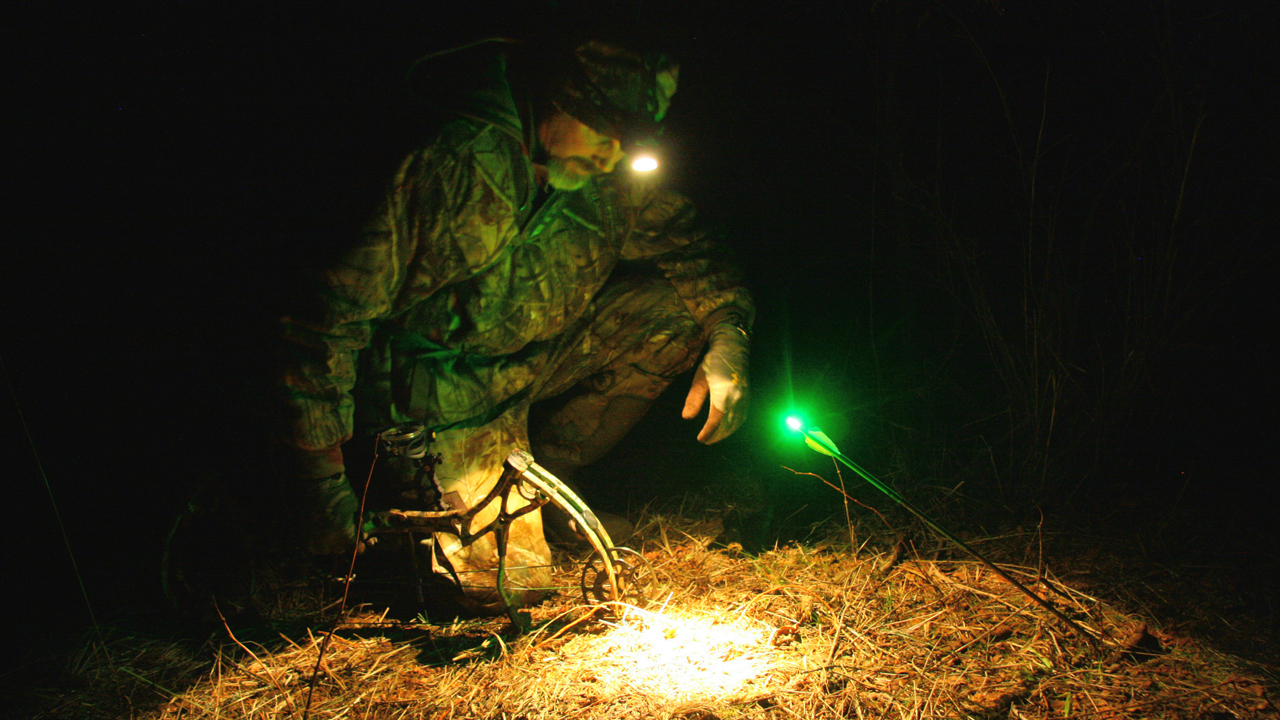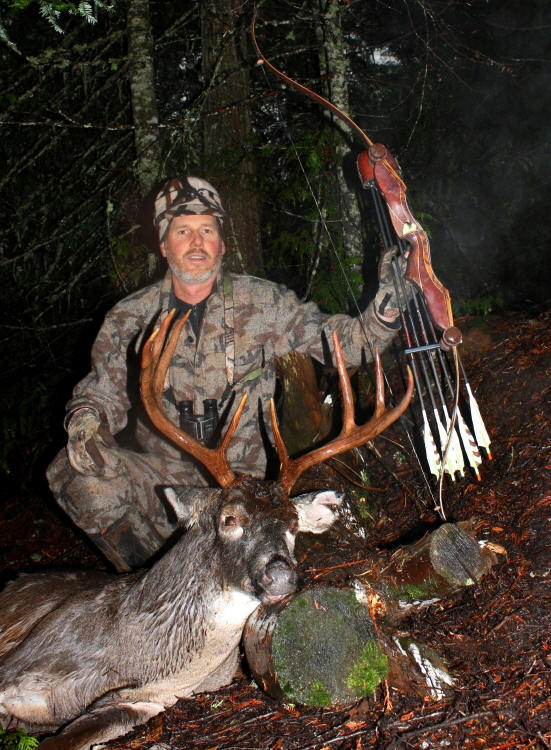Are you struggling with how to blood trail deer? Here’s a look at how to move recovery rates toward 100 percent.
We’ve all heard rants from anti-bowhunting wonks of how archers wound more animals than they recover. This is patently false, obviously. Like freezer-filling bait fishermen complaining catch-and-release anglers have all the best fishing, most of this is rooted in sheer jealousy. Fact is, not only has our equipment become more efficient (something I sometimes consider a net negative, but a big can of worms better reserved for another time) but the average bowhunter is now better informed, and educated through Bowhunter Education programs. Proper shot angles and arrow placement and the importance of individual responsibility as a participant in a sport under attack from anti-hunters are modern bowhunting realities.
That said; stuff, as they say, happens. Deer jump strings, arrows encounter unseen deflections, nerves get the best of us and arrows don’t arrive exactly where we’d wish. Heck, I’ve encountered tough trailing jobs after making what I believed were perfect hits. The unfortunate truth is if you bowhunt long enough you’ll eventually make a bad shot that will severely test your tracking skills.

The first thing a bowhunter should do after hitting a game animal is recover your arrow. Sometimes what you think you have seen and what actually happened don’t correlate and your arrow can reveal a bad hit.
Some Misconceptions
Some insist wounded animals always move downhill or directly to water. This makes sense as a general rule, but shouldn’t be considered gospel. Much depends on the type of hit. Leg hits inflicting physical injury and preventing full range of motion might make this true, but I’ve seen enough hard-hit animals move uphill to dismiss it as a rule of thumb. I’ve also seen animals die in water, but I wouldn’t ever abandon even the weakest, most-tedious blood trail to run to the nearest waterhole expecting a quick recovery. Many deer, especially older white-tailed bucks that have survived hunting pressure, have done so by having a very specific safe space. When wounded, the desire to reach that safe haven can cause unexpected behavior, like walking uphill.

The author always recommends playing out blood until that is made impossible by rain or snow. Get impatient and abandon blood and your chances of recovering that deer diminish substantially.
You’ll also hear that gut-shot animals present low-odds recovery, and single-lunged deer often survive such encounters. I’ve found quite the opposite of the former—when approached correctly after the shot—while I’ve yet to see a single-lung hit fail to kill a deer. Yes, they go much farther, and present very difficult recovery (especially without an exit to spill blood) but I’ve never picked a single-lung-hit deer back up on trail camera. If you have, your arrow most likely found the space between lung and spine (so-called “No-Man’s Land’) instead of piercing a single lung. Infection alone makes survival very unlikely.
My final observation on a highly-tricky decision is whether to push wounded deer to induce additional bleeding. I have had it work. I’ve seen it fail miserably. A Boone & Crockett-quality Coues whitetail comes to mind: forced to take a quick shot without laser range I hit that buck low and forward, but with an aggressive mechanical broadhead. I waited the appointed time and took up the trail, finding spotty blood. After 300 yards I jumped him from a bed. Noticing that bleeding increased, I made the decision to push him. I managed to bleed him out in 400 yards, a major artery in his lower neck severed.
Another time I attempted to push a velvet-antlered Idaho non-typical shot through the spleen. Cover was thick and I had only sporadic blood to guide me. After the third jump I lost the buck for the day. I found him the following morning only through determined gridding, a bear ruining his velvet and consuming much meat.
General rules apply to various hits. Even certain heart-lung hits, if you haven’t watched or definitely heard the animal go down, should occasion a half-hour wait. With spleen, liver and paunch hits I prefer 5 hours—some die in an hour, others are still alive when you find them but sick enough to allow a follow-up shot. Coyote country complicates any situation, introducing the fear of losing meat. In such cases I’ll sit or park back a few hundred yards, quietly waiting and listening. Coyotes, upon finding a free meal, often announce the windfall to friends, providing an audible beacon to recovery.
Blood Obsession
One shortfall I observe frequently while helping track wounded deer is a fixation on trailing blood. Don’t get me wrong, blood is always preferred, but other sign helps fill in the blanks. A desert Southwest denizen most of my life, I learned to track efficiently without blood. In certain settings I find it’s actually easier, especially across sandy ground. True tracking is most difficult across deep leaves, high grass, rock or moss. Yet I often find I track faster following spoor, using blood to occasionally confirm I’m on the right track. Too, don’t dismiss bent vegetation or dislodged moss, sticks, rocks and leaves.
I recall one particularly tough trail, following a poorly-hit Kansas buck across CRP grass. Blood was excruciatingly difficult to find in that visual confusion. Then I discovered that by squinting I could discern an ever-so-darker pattern where grass blades had been turned slightly or dust knocked from the stems. Whatever it was, I could detect a faint pathway the buck had taken. I decided to go with it and walked right to that buck. Everyone involved thought I’d suddenly developed psychic powers, as no one else was able to see it.

If you are uncertain of the precise placement of your arrow after a shot recovering your arrow can reveal a lot. Bright or bubbly blood generally indicates a lung hit, sticky maroon blood liver, green matter guts.
The Grind
The biggest problem with blood trailing is anxiety turns into blatant impatience, combined with egos that coax folks to rush ahead hoping to be the hero who relieves everyone involved of that stress. Sometimes you get lucky, but sticking to blood and working it patiently is always the best approach. Oftentimes, keeping the wannabe heroes and impatient “helpers” in check is the most difficult portion of this work, as they hurry ahead, obliterating useful sign.
Unless things become desperate I prefer tracking in pairs. One person stands on last blood, while another spoors ahead for sign. The marker makes it possible for the tracker to return to last blood quickly and investigate alternative routes if blood runs thin, as sometimes the most tedious trails are followed on blood specs spaced yards apart. Wounded animals, especially those on death runs, often take erratic twists and turns, so expect the unexpected—even animals turning straight uphill, as touched on earlier.

While blood trailing it’s best to get down on hands and knees to have a closer look at the ground. This makes it easier to discover small blood specs or inconspicuous smears that keep the trail moving forward.
On the toughest trails, hands and knees trailing is best, getting you closer to the ground and more likely to spot tiny specs or inconspicuous smears. Use common sense, remembering what side the hit has occurred, seeking blood higher on brush an animal might push through while passing. Carefully look beneath vegetation leaves or fronds, or disturbed leaves or debris. When blood fizzles, kneel at last blood to determine various paths of least resistance, tracing them out carefully seeking another drop of blood. Work the trail patently, even if it takes all day.
Or night. Nighttime tracking depends on the right light. Coleman lanterns work extremely well at illuminating blood. Anything LED—and I own powerful $150 numbers—prove worthless for blood trailing, just not producing the tell-tale shine that old-fashioned white light does. There are lights made specifically to accentuate blood while trailing—Primos’ Bloodhunter, for instance. Hydrogen peroxide mixed with blue dye, delivered with a spray bottle, can help highlight blood, while forensic investigators use Luminal (available online) to reveal trace blood. I’ve no experience with such products, but do trust the Primos name, so they’re worth investigating.
Gridding
Blood is always your most solid connection to wounded game. That blood will lead to that animal eventually, if it has died at all. Give up the blood and your chances of recovery diminish exponentially as the number of possibilities increase by large margins. Still, sometimes blood is erased or simply nonexistent.

The author was forced to resort to a grid search after a string jump resulted in a poor hit on this ancient buck. Unexpected winter rain obliterated snow cover and erased all possible sign during the night.
The strangest one I remember is a heart-shot Oklahoma buck run through with a 2-inch mechanical. He traveled 200 yards while failing to spill a single drop of blood (I followed tracks to recover him).
Torrential rains or overnight snow are more common factors. The oldest buck I ever shot was arrowed with a recurve bow one woolly November evening. The hot doe he was trailing busted me drawing and the buck spun to the shot, resulting in a gut hit. I wasn’t overly concerned, as there was snow on the ground and I anticipated an easy trailing job with first light. Instead those woolly clouds spilled inexplicable rain—buckets of it. With morning I began making ever-widening circles from where I’d last seen that buck, climbing up and down steep ravines and over slippery downed logs. At about 3 p.m., bone tired and becoming increasingly disgusted, I found that buck about 500 yards from my stand. Three quarters of those endless circles had been wasted energy, but all’s well that ends well.
Terrain dictates how any search proceeds, and common sense rules. In wide-open Kansas, for instance, we once found a gut-shot deer after a rainstorm by scouring a wooded creek bed, confident the buck would stick to cover and avoid open agricultural fields. In these cases I certainly welcome company—the more people the better.

 By
By 



